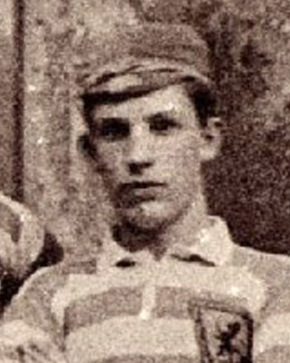WATCH: Mo Salah and Jurgen Klopp involved in heated touchline argument during West Ham draw
Salah was dropped from the starting side for the visit to London - and the striker was involved in a furious confrontation with Klopp…
Opinion
On Wednesday the 27th of July, along with fellow football writer Paul Nicholls and former ABC journalist Trevor Thompson, I had the privilege of spending a few hours at Rookwood Cemetery in Sydney.
No, we were not there to farewell a colleague, friend or family member but to meet Ged O’Brien in person, a man undertaking the monumental task of writing the most thorough and complete account of Scottish football history ever attempted.
He had also ventured across the globe in search of the final resting place of a Scottish footballer who died in Sydney on the 8th of January 1886.
O’Brien is the founder of the Scottish Football Museum, a respected academic and his upcoming work entitled The Scottish Game: How Scotland Invented Modern World Football will no doubt fly in the face of convenient and traditionally held views emanating from English sources, that it was indeed they who brought the beautiful game to the masses.

An 1882 picture of Eadie Fraser. By Unknown author – Here, Public Domain,
However, much falsified is the dominant and pioneering role played by the English in the development of the game we now celebrate as modern football.
Historical, political and elitist tensions between the English and the Scottish no doubt lie at the source of the inaccurate story presented in the most accessible of internet sources, yet as uncomfortable as the read may be for those still believing the common English mythology around the world’s most popular game, O’Brien’s text will set many a misconception straight.
His presence in Australia came about after reading Nicholl’s story and research on the former Queen’s Park and Scotland player Eadie Fraser.
After twenty years of consideration and longing, O’Brien finally made the journey down under in an attempt to locate the grave of a man who, according to the copy and records available, was a footballing genius.
Born in Canada before returning to Scotland as a young boy, Fraser played 42 times for Queen’s Park, the oldest association football club in Scotland, as well as making five appearances for the national team where he managed four goals.
Fraser featured as the club won the Scottish Cup in 1881 and 1882, as well as three Glasgow Charity Cups around the same time.
After contracting tuberculosis whilst working in Africa, Fraser was medically advised to travel to Australia in order to best help alleviate the effects of the then catastrophic disease.
Upon his arrival in Sydney, Fraser’s health deteriorated and the 26-year-old was dead within days. Penniless at the time and without a friend or family member to step in and ensure a respectful burial, Fraser’s body was transported from an inner city hospital to what we now know as Rookwood Cemetery and buried in a pauper’s grave.
The small group that gathered on Wednesday was one determined to locate the actual burial site and the cemetery staff had set about undertaking the research required in order to provide some hope to what we sought to discover on the day.
After a briefing where our hopes appeared dashed and the powers at be seemingly concerned that the co-ordinates they would be adhering to in the most remote part of Rookwood might not as reliable as we had hoped they would be, a young chap with a beard and a ute arrived to take us to Eadie Fraser’s grave.

(Photo By Stephen McCarthy/Sportsfile via Getty Images)
For those having previously traversed Rookwood Necropolis, an awareness of the needle in a haystack challenge before us would be easy to comprehend.
Yet in the far reaches of the most enormous of properties, after an extensive drive well beyond where any modern person would venture, a small and overgrown section became our focus.
There was something of a grassy field with some exposed concrete graves, yet the low-class citizens buried in the area were mostly un-identified, with the majority entombed in mass graves with multiple bodies.
Such was Eadie Fraser’s plight, buried with what is believed to be at least seven others without the finances to demand anything more.
The staff honed in on a small area, now engulfed by native trees and wispy grasses. As the numerical references of the visible graves nearby slowly began to paint a clearer picture, the location of Eadie Fraser’s remains was identified to within a metre or so.
It was the most utterly disrespectful yet understandable of situations. A large tree had shot from the soil above Fraser’s chest, the undergrowth had become overgrowth and hardly a person would have looked twice should they have walked through the area.
Yet there it was, the resting place of one of Scotland’s most undecorated and brilliant footballers. O’Brien was moved, we all were and the notion of an appropriate monument to his resting place continues to obsess in his mind.
In light of much criticism around how Australian football fails to recognise, remember and commemorate our own players, the whole experience was food for thought. Whilst not much of a ‘grave hunter’ myself, the notion of acknowledging those who have come before us has become something of a focus for many Australian sports in recent times, and football does appear to be well behind the curve in comparison.
We may be a little too young as a nation to have a hidden Eadie of our own buried in a faraway land, yet the lesson is clear. Honouring our past is pivotal to ensuring that our history is used to fertilise the future and create a timeline that tells Australia’s complete football story.